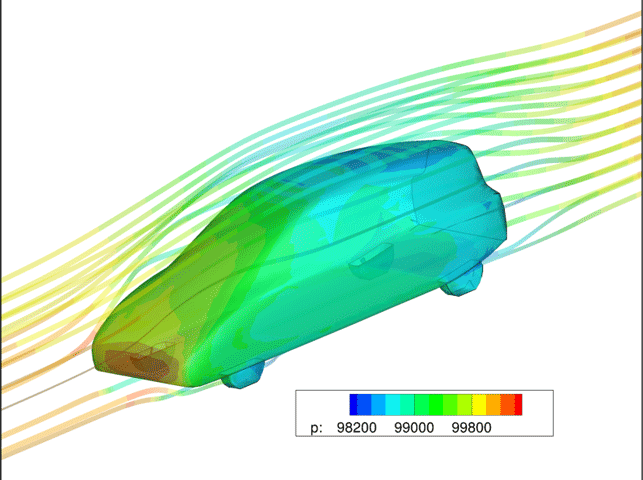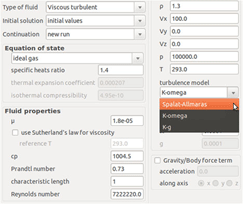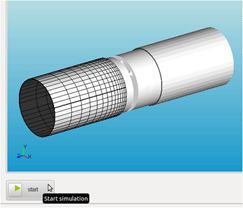There’s a saying that everything old becomes new again. You could say that is the case with the immersed boundary method. It was discovered in the 1970s, largely set aside in the 80s and 90s, and rediscovered at the turn of the century.

A Karalit 3D simulation of airflow and pressure for the ASMO idealised car body shape. Visualization was done using Tecplot
Immersed boundary differs from the current underlying technologies within CFD products in that it doesn’t require generating a mesh.
Instead of integrating the equations of fluid dynamics on grids that conform to the body shape, the IB approach integrates the Navier-Stokes system of CFD into a Cartesian grid. The body surface definition coming from the CAD model is then automatically immersed into the grid.
The other key difference is the use of apps to automate how users interact with the IB method. Karalit apps are basically templates that enable users to set up domain and boundary conditions for specific types of simulations. Enter the simulation parameters and the app takes care of the rest, including connecting contiguous geometry within the model.
A brief history
In the 1980s, 3D computations were limited to small sizes and simple geometry, so there was no perceived need for a mesh-less CFD method.
In the 1990s, CFD vendors were experimenting with all types of unstructured and adaptive mesh techniques, including tetrahedral, hexahedral, prisms and hybrid mesh generation. Although these all required time-consuming meshing, it was believed that they were the ideal way to generate a grid. But, an undesirable byproduct of these techniques was deterioration of mesh quality, especially near an object’s body surface.
Around year 2000, researchers again started experimenting with the IB method. The principal challenge was how to develop a numerical theory for generating the cells that intersect with an object’s body surface. The challenge was resolved by embedding a set of algorithms that instruct the standard numerical algorithms on where exactly the body surface lies in between the Cartesian grid. This ensures the accuracy of fluid flow in the vicinity of the body.
Increased accuracy
One of the big advantages of the immersed boundary approach is that it does not require complex morphing that can deteriorate the mesh or re-meshing of the computational domain. The grid stays the same; only the geometry information is recomputed as the object moves around.
A 2009 study by Stephen M. Ruffin of the Georgia Institute of Technology and Jae-Doo Lee of Samsung Heavy industries, published in the International Journal of Mathematical Models and Methods in Applied Sciences, concluded that the IB approach:
– increases accuracy by the use of conservative volume integration in the calculation of boundary cells;
– removes the complicated coordinate transformation required in the conventional wall function approach; and
– can reduce computational time and memory use.
In conjunction with the immersed boundary method, Karalit software provides an additional way of increasing the accuracy of turbulent simulations. The software automatically constructs a very thin boundary layer mesh that wraps around extrusions on the body surface. The extruded mesh is then immersed into the Cartesian grid. Karalit calls this approach the immersed mesh. It is a novel treatment that combines the immersed boundary method with elements of the traditional overset grid method.
Although it has taken a long road to the commercial marketplace, the IB method has been validated by numerous studies for a wide class of fluid problems, from external flows to automotive applications to internal and biological flows. Links to relevant studies can be found on the Karalit website.
We at Karalit believe that the IB method, combined with other methodologies built into the software to simplify CFD preprocessing and speed generation of accurate results, will prove to be a fresh and welcome approach to a discipline that’s remained fundamentally unchanged for around three decades. But, as with everything else in a free market, it’s the users – in this case industrial designers, engineers and researchers – who will be the final arbiters.
To read feedback from Ansys and CD-adapco on this article, click here.

Unlike most other CFD tools, Karalit’s new software does not require mesh generation
Default









